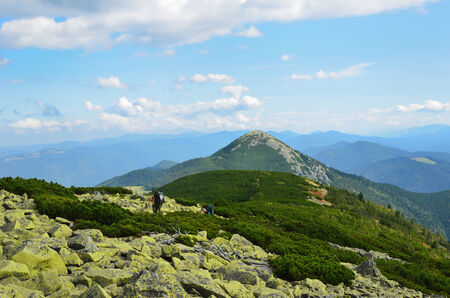Origins and Evolution of the Appalachian Trail
The Appalachian Trail, affectionately known as the AT, is an epic footpath that stretches more than 2,190 miles from Springer Mountain in Georgia all the way to Mount Katahdin in Maine. Its story begins with a visionary named Benton MacKaye, a regional planner who dreamed up the idea of a long-distance trail along the Appalachian Mountains as early as 1921. MacKaye believed the trail would offer city dwellers a place to reconnect with nature, find peace, and build community.
Benton MacKaye’s Vision
Benton MacKaye published his famous article “An Appalachian Trail: A Project in Regional Planning” in 1921. His plan wasn’t just about hiking—it included camps, farms, and communities along the route to support people seeking a better life outside urban centers. The idea quickly caught on with outdoor enthusiasts and conservationists across the eastern United States.
From Concept to Reality: Key Milestones
| Year | Milestone |
|---|---|
| 1921 | Benton MacKaye introduces the concept of the Appalachian Trail |
| 1925 | The Appalachian Trail Conference (now Conservancy) is formed to coordinate trail planning and building |
| 1937 | The continuous footpath from Georgia to Maine is completed by volunteers and local clubs |
| 1968 | The National Trails System Act designates the AT as one of America’s first National Scenic Trails |
| 1984 | Land acquisition efforts secure federal protection for most of the trail corridor |
The Role of Organizations and Volunteers
The Appalachian Trail exists today thanks to thousands of dedicated volunteers and several key organizations. The Appalachian Trail Conservancy (ATC) has been central since its founding in 1925. Local trail clubs maintain sections of the trail, clear debris, repair shelters, and ensure hikers have a safe passage. Federal agencies like the National Park Service and U.S. Forest Service work alongside these groups to protect the land and wildlife surrounding the trail.
Who Maintains the AT?
| Organization/Group | Main Responsibilities |
|---|---|
| Appalachian Trail Conservancy (ATC) | Coordinates overall management, education, advocacy, and conservation efforts |
| Local Trail Clubs (31 total) | Maintain specific sections, shelters, signage, and provide hiker assistance |
| National Park Service & U.S. Forest Service | Protect land, manage permits, enforce regulations, oversee large-scale projects |
| Volunteers (Thousands annually) | Trail maintenance, cleanup events, educational programs, outreach activities |
A True American Treasure
The Appalachian Trail has evolved from Benton MacKaye’s big idea into a beloved national treasure. It weaves through 14 states and countless communities, connecting people not only with nature but also with each other. Over time, it has become a symbol of adventure, endurance, and American spirit—welcoming everyone from day hikers to thru-hikers who walk its entire length in one season.
Trail Towns and Local Culture
The Appalachian Trail, often called the “A.T.,” stretches over 2,000 miles from Georgia to Maine. Along this legendary path, hikers don’t just experience the beauty of nature—they also encounter dozens of lively trail towns that have become an essential part of the journey. These communities offer more than just supplies and rest; they share their local traditions, stories, and famous Southern or New England hospitality.
What Makes a Trail Town Special?
Trail towns are small communities located near or directly on the Appalachian Trail. Over the years, these towns have developed a unique culture centered around supporting hikers. Whether it’s a friendly local offering a ride, a historic inn opening its doors, or a diner serving up hearty breakfasts, each town creates memorable moments for “thru-hikers” (those hiking the entire trail) and “section hikers” alike.
Famous Trail Towns Along the A.T.
| Town | State | Known For |
|---|---|---|
| Dahlonega | Georgia | Southern hospitality, gold rush history |
| Hot Springs | North Carolina | Naturally heated mineral springs, hiker festivals |
| Damascus | Virginia | “Trail Days” festival, welcoming vibe |
| Harpers Ferry | West Virginia | A.T. Conservancy headquarters, Civil War history |
| Hanover | New Hampshire | Ivy League town (Dartmouth College), classic diners |
| Monson | Maine | Gateway to the 100-Mile Wilderness, cozy hostels |
Traditions and Hospitality: A Two-Way Street
Towns along the Appalachian Trail have built deep connections with hikers over generations. You might hear about “trail angels”—locals who leave snacks or water at trailheads or offer rides into town. Many businesses display signs saying “Hikers Welcome!” and some even keep special logs for hikers to leave messages for those coming after them.
How Hikers and Townsfolk Connect
- Hostels & Bed-and-Breakfasts: Unique places where hikers can swap stories with locals and other travelers.
- Community Events: Annual festivals like Damascus’ “Trail Days” bring together thousands of hikers and residents for music, parades, gear swaps, and fun competitions.
- Local Eats: Restaurants often create signature dishes just for hungry hikers—think giant pancakes in Georgia or homemade pies in Maine!
- Cultural Exchange: Hikers bring news from far away while locals share regional tales and traditions.
The Lasting Impact of Trail Culture
The relationship between hikers and these small towns is truly special. Many hikers return as volunteers or even move back to their favorite trail town. Likewise, local residents take pride in being part of a tradition that welcomes people from all over America—and the world—to explore both wild landscapes and warmhearted communities along the Appalachian Trail.

3. Natural Wonders and Biodiversity
The Appalachian Trail, often called the “A.T.” by locals and hikers, is not just a path through the mountains—its a journey through some of Americas most breathtaking natural wonders and rich biodiversity. Stretching over 2,190 miles from Georgia to Maine, the trail crosses a variety of ecosystems that make it one of the most unique long-distance hikes in the world.
Highlighting Diverse Ecosystems
As you trek along the A.T., you move through different climate zones and environments. From the lush southern forests of Georgia filled with rhododendrons and mountain laurels, to the rocky ridges of New England lined with spruce and fir trees, each section has its own distinct feel. The trail passes through:
- Deciduous forests teeming with oaks, maples, and hickories
- Misty balds and high-elevation meadows in North Carolina and Tennessee
- Bogs and alpine zones in New Hampshires White Mountains
- Ancient hardwood stands in Pennsylvania and Virginia
Scenic Vistas That Take Your Breath Away
Some of America’s most iconic views are found on the A.T. Whether it’s catching sunrise at Clingmans Dome or standing atop Mount Katahdin at journey’s end, hikers are rewarded with incredible panoramas. Here’s a quick look at some can’t-miss vistas:
| Location | State | What Makes It Special? |
|---|---|---|
| McAfee Knob | Virginia | Most photographed spot on the A.T.; dramatic rock ledge overlooking Catawba Valley |
| Clingmans Dome | Tennessee/North Carolina border | Highest point on the trail; 360-degree views of Smoky Mountains |
| Franconia Ridge | New Hampshire | Mile-long alpine ridge walk with sweeping views of White Mountains |
| Mount Katahdin | Maine | The northern terminus; rugged summit marks the trail’s grand finale |
A Haven for Wildlife Enthusiasts
The Appalachian Trail provides sanctuary for hundreds of animal species. Hikers might spot white-tailed deer grazing quietly in a meadow, hear the distinctive call of a barred owl at dusk, or even catch a glimpse of black bears foraging for berries. Birdwatchers are especially rewarded, with migratory songbirds like warblers and thrushes filling the woods each spring and fall.
Common Wildlife Along the Trail:
- Black bear (Ursus americanus)
- White-tailed deer (Odocoileus virginianus)
- Pileated woodpecker (Dryocopus pileatus)
- Slimy salamander (Plethodon glutinosus)
- Bald eagle (Haliaeetus leucocephalus)
The Trail’s Environmental Significance & Conservation Efforts
The A.T. isn’t just beautiful—it plays a big role in protecting nature. The trail acts as a vital wildlife corridor, connecting large tracts of wild land across 14 states. Thanks to organizations like the Appalachian Trail Conservancy and countless volunteers, ongoing efforts keep these lands healthy for both people and wildlife. Conservation work includes maintaining trails to prevent erosion, fighting invasive species, restoring native plants, and educating visitors about Leave No Trace principles.
Why Conservation Matters:
- Keeps water sources clean for communities downstream
- Protects rare plants and habitats found nowhere else in the U.S.
- Ensures future generations can experience America’s wild beauty firsthand
- Supports local economies through tourism and recreation jobs
The Appalachian Trail stands as a living testament to America’s natural heritage—a place where anyone can reconnect with wild landscapes, marvel at mountain views, and witness nature thriving along every step of this iconic hike.
4. Hiker Stories and Appalachian Folklore
Unforgettable Thru-Hiker Tales
The Appalachian Trail, stretching over 2,190 miles from Georgia to Maine, is not just a footpath—its a living storybook filled with the adventures of hikers from all walks of life. Every year, thousands attempt a thru-hike, while many more enjoy sections at their own pace. Their journeys inspire countless stories that are passed along the trail.
Memorable Experiences from the Trail
| Hiker | Trail Name | Memorable Story |
|---|---|---|
| Jennifer Pharr Davis | Odyssa | Broke the record for fastest supported thru-hike in 2011, inspiring many with her endurance and grit. |
| Earl Shaffer | The Crazy One | Became the first person to hike the entire AT in one continuous journey in 1948, proving it could be done. |
| Benton MacKaye | — | The trail’s visionary founder; his dream was for people to connect with nature and each other on this path. |
| Grandma Gatewood | Grandma Gatewood | At age 67, she hiked the AT solo in sneakers and became a legendary symbol of perseverance. |
Section Hikers: Making Memories One Step at a Time
Unlike thru-hikers who aim to complete the trail in one go, section hikers take their time, often spending years exploring different parts of the AT. Many find joy in returning to favorite spots or discovering new ones each season. They form tight-knit communities and cherish every mile as part of a larger adventure.
Trail Angels and Legendary Characters
The AT is famous for its “trail magic”—unexpected acts of kindness from locals known as trail angels. Some provide food, rides, or even places to rest. Legendary characters like Baltimore Jack and Miss Janet have become beloved figures, helping countless hikers and sharing wisdom about life on the trail.
Appalachian Folklore: Myths and Legends Along the Path
The mountains of Appalachia are steeped in folklore passed down through generations. Hikers swap ghost stories around campfires or share tales about mysterious lights and unexplained happenings in the misty woods.
Popular Appalachian Trail Folklore Examples:
- The Brown Mountain Lights: Strange glowing orbs reported by hikers near North Carolina’s Brown Mountain—a phenomenon still debated today.
- The White Blaze Ghost: Some say they’ve seen a friendly spirit guiding lost hikers back to the trail using flashes of light resembling the white blazes marking the AT.
- Tales of Bigfoot: Sightings and stories about mysterious creatures lurking deep in remote stretches of forest fuel late-night conversations among hikers.
- The Legend of Thunderstruck Ridge: Local lore claims this mountain is cursed with sudden storms due to ancient spirits protecting the land.
A Living Community of Stories
The Appalachian Trail isn’t just about reaching Mount Katahdin or Springer Mountain; it’s about the friendships made, the legends told, and the sense of wonder that comes from being part of something bigger than yourself. Whether you’re a seasoned thru-hiker or just out for a day hike, there’s always another story waiting around the next bend.
5. The AT Today: Challenges and Community
The Appalachian Trail (AT) is more than just a footpath; it’s a living symbol of American adventure, freedom, and connection with nature. Today, the AT faces new challenges and opportunities as it continues to shape outdoor culture in the United States.
Trail Preservation: Keeping the Path Alive
Preserving the AT for future generations is a big job. The trail stretches over 2,190 miles, crossing forests, mountains, and private lands. Conservation groups like the Appalachian Trail Conservancy (ATC) work hard to protect this unique corridor from threats such as:
| Challenge | Description |
|---|---|
| Development | Urban sprawl and construction can cut into protected lands. |
| Erosion & Overuse | Heavy foot traffic wears down the trail, causing environmental damage. |
| Climate Change | Unpredictable weather patterns affect wildlife and plant life along the trail. |
Volunteers play a huge role in maintaining the trail by repairing paths, cleaning shelters, and educating hikers about Leave No Trace principles.
Inclusivity: Opening Doors for Everyone
The AT has traditionally attracted a certain type of hiker—mostly white, male, and middle-class. But today, there’s a strong movement to make the trail welcoming for everyone. Groups like Outdoor Afro, Latino Outdoors, and Warrior Expeditions encourage people of all backgrounds to experience the magic of the AT. This push for inclusivity means:
- Improved signage and resources for non-English speakers
- Scholarships and gear grants for underrepresented hikers
- Community events that highlight diverse voices and stories from the trail
The Spirit of Community: Then and Now
The “trail family” or “tramily” is a special part of hiking culture on the AT. Hikers support each other with tips, supplies, and encouragement—sometimes forming lifelong bonds. Trail towns along the route also welcome hikers with open arms, offering everything from hot meals to shuttle rides. Today’s community spirit includes:
- Online forums where past and future hikers connect
- Annual festivals celebrating thru-hikers’ achievements
- A growing network of “trail angels” who help hikers in need
The Evolving Adventure: Inspiration & Stewardship
The Appalachian Trail continues to inspire new generations to seek adventure, challenge themselves, and care for wild places. Whether someone hikes a single mile or completes the entire journey from Georgia to Maine, they become part of a shared story—one that’s always growing and changing.


